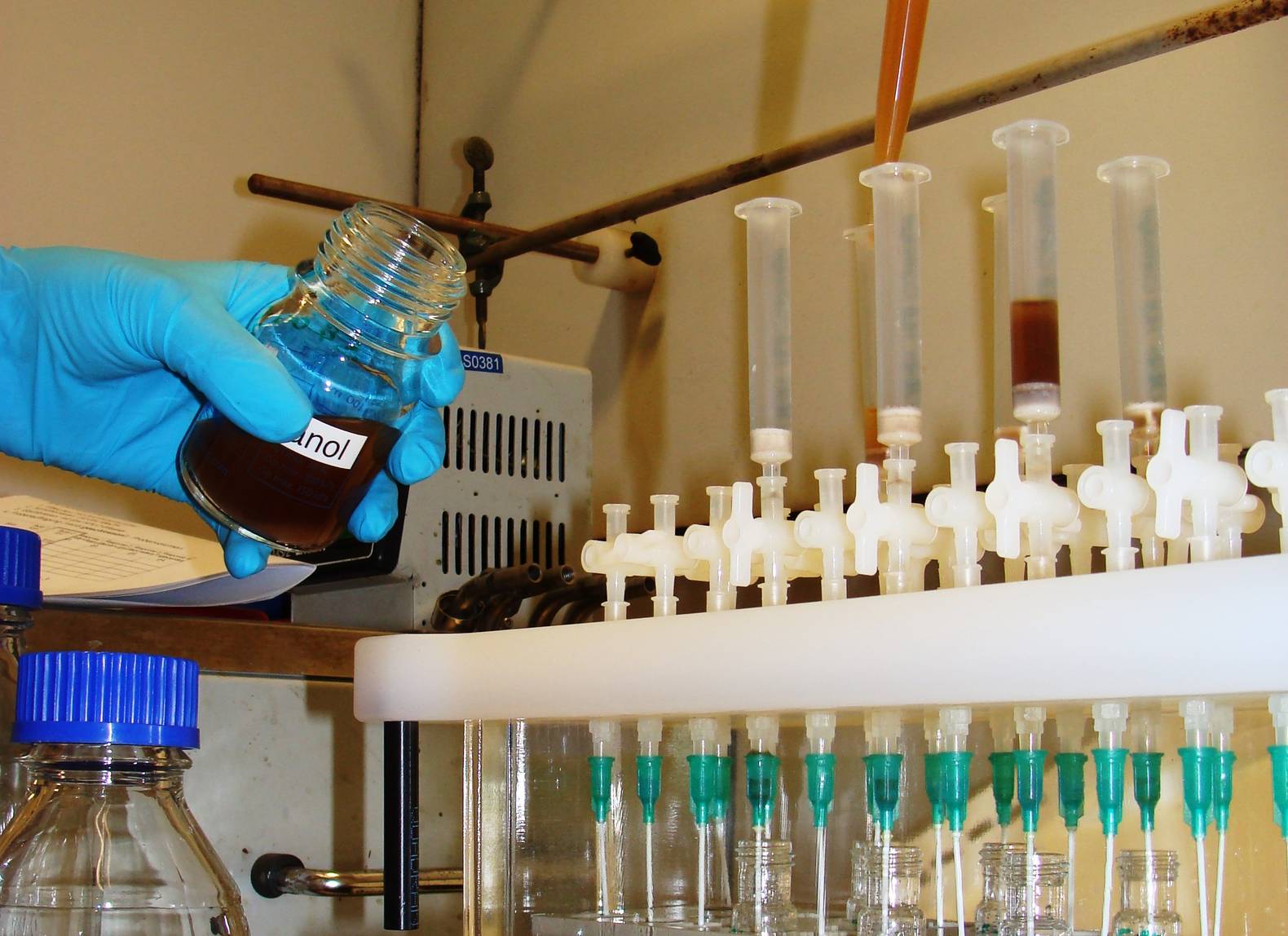
A robust and simple extraction method for process effluents by solid phase extraction
Closing the loops for process waters in the pulp and paper industry is an important step to minimize the environmental footprint. It enables significant reduction of water consumption, but on the other hand undesired wood components are enriched within the process. In collaboration with Lenzing AG, a highly versatile extraction method was developed to enable characterisation of the diverse components in aqueous samples. The novel method combines the purification, enrichment or fractionation steps and makes therefore process control easier and faster.
Pulp and paper industry
Additionally to the main wood components, a small amount of diverse components are found within the tree, which fulfill important biological functions. These are so called wood extractives and are partly necessary for the growth and energy supply, but also the protection against fungi and bacteria or against wound desiccation. Although the extractives only represent a small proportion of wood as raw material (4 – 10 % dependent on the species), their presence has enormous impact on the process due to the high throughput and the relatively closed water loops in the pulp and paper industry. Therefore a monitoring of these components seems inevitable.
Wood extractives consist of a wide range of compounds with different chemical properties. These may contain water soluble structures (sugars and polyphenols) or fat soluble substances (resins, steroids, fats and waxes). Many of these substrates are, among others, utilised in the food or pharma industry, however, mainly as a particular group of these substance classes. The simultaneous extraction of several groups of these components, with as little loss as possible for the subsequent analysis turns out to be more complex.
On that account an extraction method was searched, which allowed versatile applications and was easy and fast to use. The work was undertaken in cooperation with the process innovation and bio-refinery team of the Lenzing AG.
The optimization of the extraction conditions lead to the improved extraction of the substance groups without additional pre-treatment and enables further the fractionation of the groups. The method may be used for several process effluents. The minimized duration and easy handling of the method enable the processing of a high amount of samples in a short time and with low costs.
Advantages over traditional methods
Besides the extraction with a solid medium, the extraction of aqueous samples with a liquid solvent is common. The extracting agent used has to fulfil several criteria, e.g. it has to be immiscible with water. That limits the application for water soluble components. Apart from the high solvent consumption to ensure the highest possible extraction yields, the separation of the immiscible phases raises some additional problems.
These problems may be avoided by the use of solid phase extraction. Commonly used solid phases are only stable under certain conditions and therefore require additional sample pre-treatment steps and permanent attention.
For the newly developed and optimized method, a material could be found, which is not only robust enough to withstand the diverse process effluent samples without side reactions due to its chemical structure, but also shows a higher adsorption of the various substance groups. No special knowledge is required for the method and it is reliable with comparably low solvent consumption.
Impact and effects
Due to the robustness and the wide-ranging retention of the diverse substance groups of the novel method, the monitoring of process effluents of the pulp and paper industry is simplified.
The high resistance of the solid phase against chemicals enables the analysis of the process effluents under realistic conditions, as no pre-treatment is needed. That allows a consequent reduction of analysis time and costs, as several preparation steps are omitted.
The reduced resource consumption and the flexibility when choosing the solvent enables an environmental friendly processing of the process effluent samples and is an further example for the sustainable organization and efficiency in the Lenzing AG.





